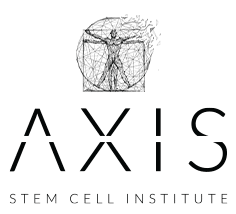
What is Paralysis?
When your body makes voluntary movements, it happens through a complex process of nerves, muscle contractions, and chemical signals from the brain that connects to the body through the spinal pathways. These processes all happen in a split second – and when this process is disrupted, leading to the inability to stimulate motor function of the body it’s called paralysis. Paralysis is the inability to make muscle movements because of a problem with connections of the brain in the upper motor neurons, the pathways that connect the neurons to the body, or destruction of the nerves or nervous plexus at the target tissues. the nervous system. It can have different severities, including:
- Partial Paralysis (paresis): You retain some ability to move muscles but not all. This can be in one limb or region of the body or one side vs the other.
- Complete Paralysis: You lose all ability to control muscles ex: Paraplegia and Quadriplegia
Paralysis can impact everyone differently, affecting only a few muscles or entire sections of the body. For example, as discussed above, it might affect one side of the body (hemiplegia), both legs (paraplegia), or all limbs (quadriplegia). Localized paralysis can affect small areas of the body like the face, hands, or feet.
What Causes Paralysis?
Paralysis is caused by disruption of the nervous system, whether it’s because of birth defects, traumatic injury, or medical conditions like Bell’s palsy, multiple sclerosis (MS), or amyotrophic lateral sclerosis (ALS). Strokes or brain damage can also cause paralysis.
People most often associate paralysis with spinal cord injury, and this is one of the most common causes. In the case of spinal cord injury, factors like the type of injury, location, and severity can impact the degree to which you’re paralyzed.
How Can Stem Cells Help Paralysis?
Stem cells can be an effective way to regenerate damaged nerve tissue so that your nervous and musculoskeletal systems work as they need to. Stem cell therapy can also reduce inflammation and help reduce the underlying causes of paralysis. Finally, stem cell therapy can help reduce chronic pain or numbness that comes with paralysis.
Stem Cell Therapy for Paralysis
Stem cell therapy for paralysis works by injecting stem cells from your own tissue or a donor into the area with the goal of regenerating nerve tissues. Stem cell therapy has a low risk of adverse reaction since it uses tissue from your own body or a screened donor. It can even be performed as an outpatient procedure at our office, so you can return home afterward. During a consultation with our stem cell experts, you can learn more about your stem cell therapy options.
Schedule a Consultation
At Axis Stem Cell Institute, we’re dedicated to helping you enjoy your best life without pain or paralysis impacting your daily life. Your first step is meeting with our experienced team who can give you the most up-to-date information on stem cell treatments and what you can expect. To get started, contact our Seattle, and St. Petersburg office by calling 425-410-4468 or filling out our online form.

